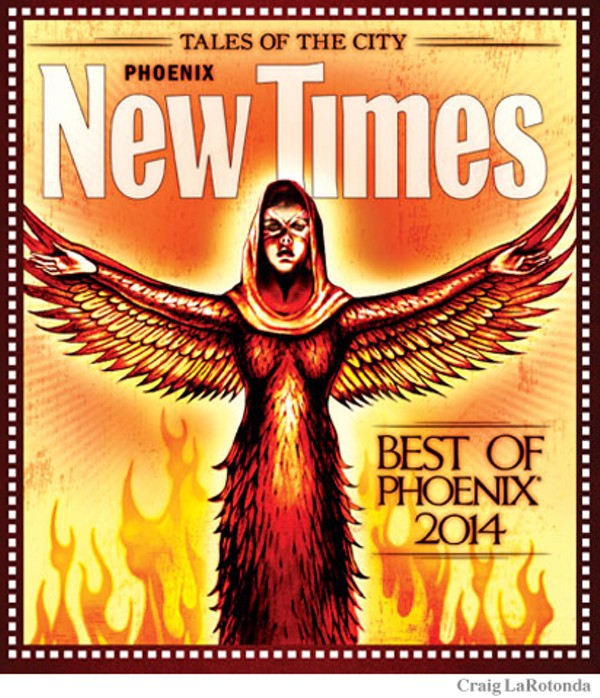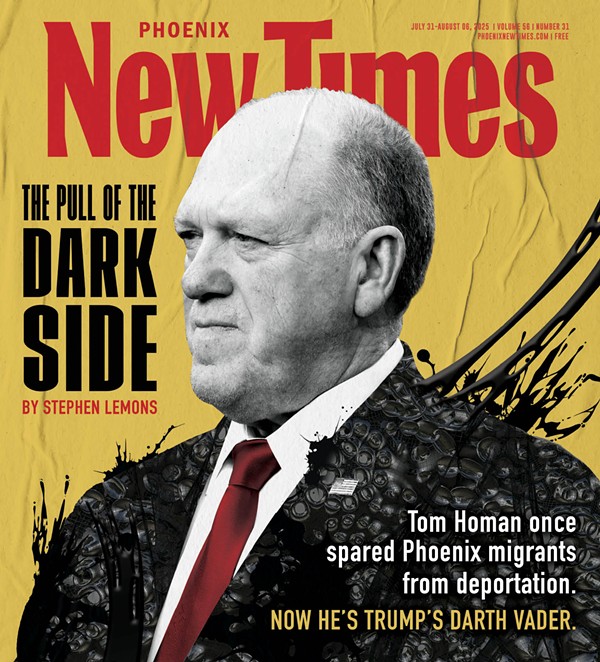Goods / Services
Who says all the great treasures in thrift stores are scooped up by antique dealers and crafty pickers? Not Mary Scanlon, who found a previously undiscovered recording of a 1964 speech given by Martin Luther King Jr. at Arizona State University.
The tape was among a pile of reel-to-reel audio recordings made by Phoenix businessman and civil rights leader Lincoln Ragsdale Sr. Apparently, someone had dumped the three dozen tapes at a local Goodwill after Ragsdale's death in 1995.
Scanlon did a little sleuthing and after finding an Arizona Republic ad from June 1964 announcing King's appearance at ASU, she took the box of tapes to Rob Spindler, ASU archivist and curator of special collections for Arizona. Once Spindler and his staff determined that the King recording was legit, he brokered permission to make the speech available online through ASU's Library Repository.
It turned out that King had been invited to deliver the speech, titled "Religious Witness for Human Dignity," by the Maricopa County chapter of the NAACP. The discovery of the recording is significant in part because the speech is mentioned in passing in a couple of MLK biographies, yet its text — specific to spirituality and equality in religion — had been lost to time. What's more, King gave the address less than a month before the landmark Civil Rights Act of 1964 was signed into law by President Johnson and despite the fact that King's presence here was not supported by Senator Barry Goldwater, then at the height of his power.
So, being here at all was brave of MLK, whose speech is preserved at ASU for all time. In fact, two dozen of the tapes from Scanlon's thrift score, others of which also contained speeches by powerful rights activists of the time, have been digitized and archived at the university.
The mystery remains, however: How did such important material end up in a dusty box at a local thrift store?
It might be the single most ubiquitous antique-shop item in the history of vintage resale. The West Bend Penguin Hot and Cold Server (known to collectors at the Penguin Ice Bucket) was a globe-shaped kitchenware server, embossed with a clutch of penguins marching around its perimeter and perfect for ice cubes on the bar or rolls hot from the oven. Manufactured by the West Bend Aluminum Company in 1941 and available throughout the early '70s, the Penguin came in three metal finishes: chrome-plated steel, brushed aluminum, and solid copper. The chrome version, available with three different knob and penguin-wing-shaped handle options (wood, black Bakelite, and the more rare red Bakelite) was the most common.
The Penguin, a popular staple in many households for decades, can be found in nearly every antiques store in the country — but no more so than in Phoenix, where there appear to be more Penguins per resale square foot than in any other city. Why?
The story goes that, when West Bend ceased manufacturing of the Penguin in 1971, the leftover stock was sold to a man named Herman Fern. Herman, a former West Bend sales rep who'd retired to Phoenix, reportedly bought up all the leftover Penguins, then set about selling them, door to door, all over the Valley of the Sun. More than one local remembers Herman, in a three-piece suit, demonstrating the marvels of a shiny silver globe that keeps things both hot and cold!
When Herman died, his family reportedly found a stash of mint-in-box Penguins that they immediately sold to a Phoenix-based mid-century dealer, who began reselling them to local antique mall dealers. Thus, the inordinate number of shiny round chrome ice buckets (great for keeping rolls warm!) all over the Valley.
Next time you see a Penguin, think of Herman Fern.
Some spell it bolo. Some spell it bola. It's been on cowboy's necks and in art museums. It may be a Native American tradition, a British invention, or a local's trick to avoid losing his special hatband. And though its history is murky, one thing is certain: The bola tie is Arizona's official state neckwear, and if history tells us anything, it won't be going out of fashion here anytime soon.
The bola tie is a rather simple invention. A cord, often made of braided leather, is secured around the neck with a decorative metal slide. There's some debate, but most seem to agree that historically speaking, bola, not bolo, is the proper spelling. A boleadora, or bola for short, is a type of South American lasso used in ranching.
In a bill passed in 1973, the Arizona Legislature (with a push from U.S. Senator Barry Goldwater) made the bola Arizona's official neckwear. New Mexico and Texas later enacted similar legislation.
The first patent on the bola tie — for an improved slide device that would stay in place better — was granted in 1959 to a Wickenburg man named Victor Emmanuel Cedarstaff. Cedarstaff claimed to have invented the bola in the late 1940s. Legend has it that he placed his special hatband around his neck one day while horseback riding to avoid losing it to the wind, and the rest is history.
Others say a dentist out of Kingman was actually the original creator. But others think the bola's roots go even deeper. Some say the tie, often made of silver and turquoise, was invented by Native Americans. Some link it to early pioneers in the late 19th century. Some even say King Henry IV of England created it.
Another common theory has Mark Hickok as the originator of the bola trend. Hickok's New York and Texas-based company advertised sales of the bola the same year Cedarstaff patented it (some say even before). "The solution to your sport shirt-necktie problem. Hickok designed and approved for dining by the finest hotels and restaurants," read one ad.
Many think this use is just why the bola took off as a trend.
As restaurants began requiring ties on men in the 1950s, the bola was a simple path to get inside (no knotting skills required!). Bola ties later became a rockabilly standard as well as a cowboy staple. And the bola has even gone high brow. Northern Arizona University donated its large collection of ties to the Desert Caballeros Museum in the bola's (maybe) hometown of Wickenburg. NAU's collection was largely donated by a local television personality named Bill Close, whose fans had sent him bola ties to wear on the air for years. And in 2011, the Heard Museum in Phoenix hosted a large-scale exhibit of bola ties.
The tie has remained popular with politicians and athletes (and now, even hipsters) ever since. For many, the tie is a way to showcase Southwestern pride or roots. Its origins may be a bit mysterious, but we think it's fair to claim the bola's heart (and biggest fan base) is here in the desert of Arizona.



